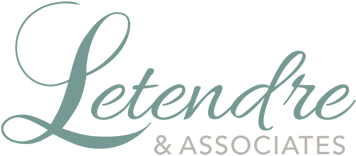What if…?
When many groups meet, they often resort to the all-too-common, discussion-style team meeting. While there is a time and place for this approach, in my experience, there are much better methods, depending on the objectives you are seeking to achieve.
I find that many leaders have not been exposed to the range of team-based tools and techniques that can improve team effectiveness, decision-making, and buy-in.
The typical discussion-style approach, which seems to be the default, is often characterized by:
- Only one person contributing at a time (which can be inefficient)
- The most articulate or loudest or most persistent person(s) dominating the discussion (which does not engender buy-in to team decisions)
- Missing out on hearing the perspectives of the calm-debater and therefore wrongly assuming that they are in agreement with what is being verbalized by others
- Not gaining the benefit of the varied ideas, wisdom, expertise and unique perspectives of all team members when considering options on how to proceed
- Running out of time to fully explore topics, problems and solutions
- Groups “arriving at a decision” without “making a decision”.
There are much better ways to tap into the wisdom of teams.
In my experience, this comes through intentional, skillful and judicious use of team-based techniques that can aid problem-solving, decision-making, and planning (to name a few objectives).
I was recently working with a group of rising leaders who shared that in their careers they had not been exposed to or learned how to effectively use the dozen or so team-based tools that would allow them to run much more effective team working sessions. They simply were not aware there was another way.

By way of example and contrast:
As a team, we are discussing how to solve the recurrent issue of X, Y or Z.
A. In the typical, discussion-style meeting, we bring together the team of say 12 people. We have this topic on the agenda for :20-:30, along with other agenda items for our hour-long team meeting. In that time (20-30 minutes), we can hear from perhaps 6 people (at 2 minutes each) or, more commonly, from 1 person for 7 minutes and then from a few others who wish to agree or disagree with that person’s diatribe.
The group then moves into the final minutes of the meeting (:10) to identify some next steps. We walk out with a few people having shared their thoughts and a seeming “decision” although I would argue with limited clarity and buy-in as to whether what was just “decided” will make any difference.
B. Contrast that with a team working session using say an Affinity Diagram, where we bring together the same 12 people. We pose a carefully crafted question. All 12 people generate responses to the question on Post-It notes. Each of the 12 people contributes 5-6 responses each. In total this takes 5-7 minutes and we have “heard” from everyone, have generated dozens more ideas (12×5=60 responses), and have the material now to work from as it is recorded on post-its rather than just verbal words in the air.
We then take the time to Affinitize the ideas (on the sticky notes or on the virtual whiteboard) to find connections between various perspectives; connections in the form of both synergies and conflicts – both are useful to making a team decision based on the wisdom of the team.
Perhaps simply by weighing in in this way the team members feel more informed to make a team decision about how to proceed. Often another tool can be used to solidify and make a decision on the best next course of action – this may be the Radar Chart, the Interrelationship Diagraph, or a Prioritization Matrix depending on what emerged from the Affinity tool.
While the use of team-based techniques takes more thoughtful upfront preparation for the agenda topic, the outcomes are often profoundly better:
- Better decisions
- Less likely to miss something
- Increased buy-in
- Momentum to improve
- Greater clarity on what we decided and why

If you’d like to receive these Inspirations in your inbox every other week, you can subscribe to Kathy’s Excellence Advantage Inspirations Newsletter.
Kathy Letendre, President and Founder of Letendre & Associates, advises organizations and leaders to create their excellence advantage.
Contact Kathy by phone or text at 802-779-4315 or via email.

